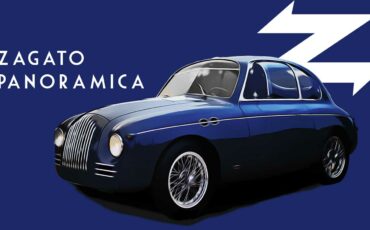
In the 1950s, as the world looked to the skies with awe and optimism, a new design movement began to emerge, deeply intertwined with the technological advancements and cultural shifts of the era. While Atomic Age design influenced fields like architecture and industrial design with its fascination for nuclear energy and futuristic motifs, Space Age design expanded into a broader array of consumer products, influencing everything from furniture and fashion to animation, as seen in the iconic television show The Jetsons. This aesthetic was fueled by the optimism of the time, most notably sparked by the launch of Sputnik in 1957, which marked the dawn of the Space Age.
Space Age design encapsulated society’s faith in technology and the future, utilizing newly available materials such as fiberglass and aluminum; materials made more accessible by advancements following World War II. The aesthetic was characterized by bold, futuristic forms and motifs inspired by rockets, space exploration, and science fiction. This fascination with the cosmos and technological progress naturally spilled over into the automotive world, especially in America, where car designs began to incorporate jet-inspired fins, bubble-like canopies, and sleek, streamlined bodies.
Italian automotive design, known for its elegance and artistry, was profoundly influenced by these futuristic ideas. Italian coachbuilders such as Ghia, Bertone, and Pininfarina were inspired by the space-age aesthetic but added their own flair, blending American futurism with the distinct elegance of Italian craftsmanship. The result was a series of iconic cars that embodied the optimism of the Space Age, merging cutting-edge design with a timeless, European sensibility. From tail lights that look like jet turbines of the Fiat 8V Supersonic to the alien-like forms of the Alfa Romeo BAT series, Italian automotive design during the 1950s reflected both the excitement of technological innovation and the exquisite taste of Italy’s world-renowned coachbuilders.
Let’s explore some of the most iconic models built by Italian coachbuilders that were deeply inspired by the American Space Age design, showcasing how this futuristic movement shaped the automotive world in Italy during the 1950s.
Fiat 8V Supersonic (Ghia)
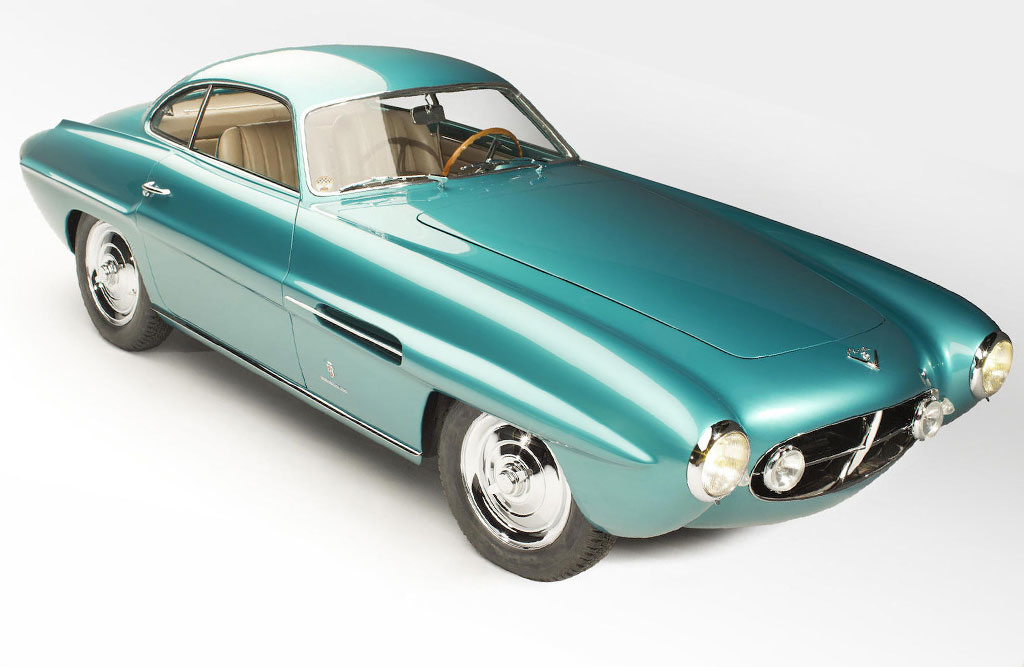
The Fiat 8V Supersonic, designed by Giovanni Savonuzzi for Ghia in 1953, is a striking example of Space Age design influencing automotive aesthetics. Its sleek, aerodynamic lines, inspired by the era’s fascination with jet aircraft and futuristic technology, emphasize speed and elegance. The elongated body, with a curved, tapering rear, evokes the streamlined shapes of rockets and airplanes. The design is further accentuated by subtle fins integrated with tail lights that mimic the look of afterburners. The overall design captures the optimism of the post-war era, reflecting humanity’s excitement for space exploration and technological advancement.
Abarth 1100 Sport (Ghia)

The Abarth 1100 Sport by Ghia, designed by Giovanni Michelotti, reflects the American Space Age’s influence on automotive design. Built on the final Abarth 205 chassis, its broad oval grille, low stance, and sleek canopy-like roof echo jet-inspired aesthetics. This streamlined, futuristic look mirrors the era’s fascination with space exploration and aviation. Debuting at the 1953 Turin Auto Salon, the car blended cutting-edge performance with innovative design, earning praise for its elegance and dynamism. Michelotti’s creation stands as a symbol of the optimism and technological enthusiasm of the post-war Space Age era.
Dodge Firearrow I (Ghia)

The Dodge Firearrow I, designed by Virgil Exner and built by Ghia Torino, is a prime example of the Space Age influence on automotive design. With its striking bright red finish and dramatic gray molding, the Firearrow I featured a distinctive blade-like bumper and dual headlamps. Exposed exhaust pipes, mounted low on the flanks, highlighted its futuristic aesthetic. Inside, the car boasted well-padded yellow leather seats with narrow maroon piping and a wood-rimmed steering wheel, blending Italian elegance with American innovation. Exhibited at the 1953 Turin and New York Auto Shows, the Firearrow I inspired Eugene Casaroll, leading to the creation of the Dual-Ghia Convertible, underscoring Ghia’s pioneering role in the Space Age design era for cars in Italy.
Chrysler TurboFlite (Ghia)

The 1961 Chrysler TurboFlite, unveiled at the 1962 Chicago Auto Show, embodies Space Age design with its futuristic features. Designed by Virgil Exner and built by Ghia, the TurboFlite showcased a unique canopy that lifted with the doors and retractable headlights. Its turbine engine, with rapid acceleration and reduced fuel consumption, signaled a shift away from piston engines. The car’s design included aerodynamic elements like concealed headlights and a rear wing for added braking. Although it never went into production, the TurboFlite’s innovative design and technology left a significant mark on the automotive industry.
Lincoln Futura (Ghia)

The Lincoln Futura, built by Ghia in Turin, Italy, and unveiled in the 1950s, is a quintessential example of Space Age design. True to its name, “Futura” (Future), the car showcased extravagant and futuristic styling, featuring transparent plastic canopies, enormous headlight pods, and large, outwardly-tilted rear fins. Painted white, the Futura was fully functional and became a prominent show car for Ford, influencing toy models and production cars with its distinctive elements. The Futura also appeared in the 1959 film *It Started with a Kiss*, where it was painted red. After its film debut, the car’s fate seemed sealed as it was presumed scrapped. However, it was later acquired by famed customizer George Barris, who transformed it into the iconic Batmobile for the 1960s *Batman* TV series. The transformation was completed in just six weeks, cementing the Lincoln Futura’s legacy in automotive history.
Lincoln Gilda (Ghia)
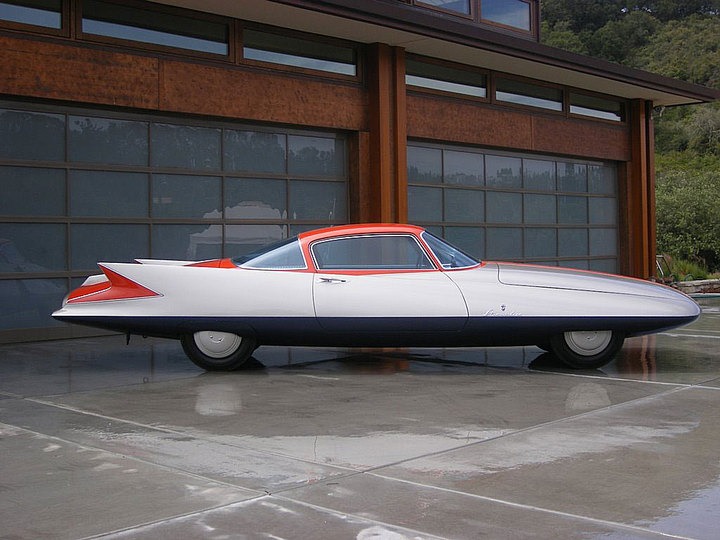
The Lincoln Gilda, introduced at the 1955 Turin Auto Show, epitomizes Space Age design and underscores Ghia’s pioneering role in Italy’s in this design movement. Designed by Giovanni Savonuzzi and built by Ghia, the Gilda looked like a spaceship with its sleek three-tone paint job, lightweight aluminum body, and compact AiResearch turbine engine capable of reaching 160 mph. Its futuristic design included a minimalist interior with floating dashboard instruments and supportive armrests. Named after Rita Hayworth, the Gilda highlights Ghia’s leadership in shaping Italy’s Space Age automotive vision.
Ferrari 410 Superamerica (Ghia)
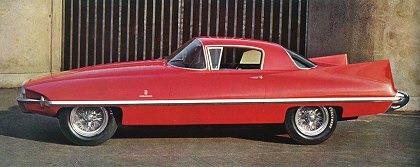
The Ferrari 410 Superamerica Ghia, built on chassis #0473SA and designed by Giovanni Savonuzzi, is a notable example of mid-20th century Space Age design. This model reflects Ghia’s pioneering role in Italy’s automotive styling, featuring a futuristic aesthetic akin to the Lincoln Gilda and Chrysler Dart. The 410 Superamerica Ghia is distinguished by its sharply pointed fins, rising nearly a foot and a half above the rear fenders, and its massive rear bumper, elements that drew mixed reactions from Ferrari enthusiasts. The wraparound windshield, a popular trend of the mid-1950s, added visual appeal but also practical drawbacks, such as discomfort for drivers.
Alfa Romeo BAT 5 (Bertone)
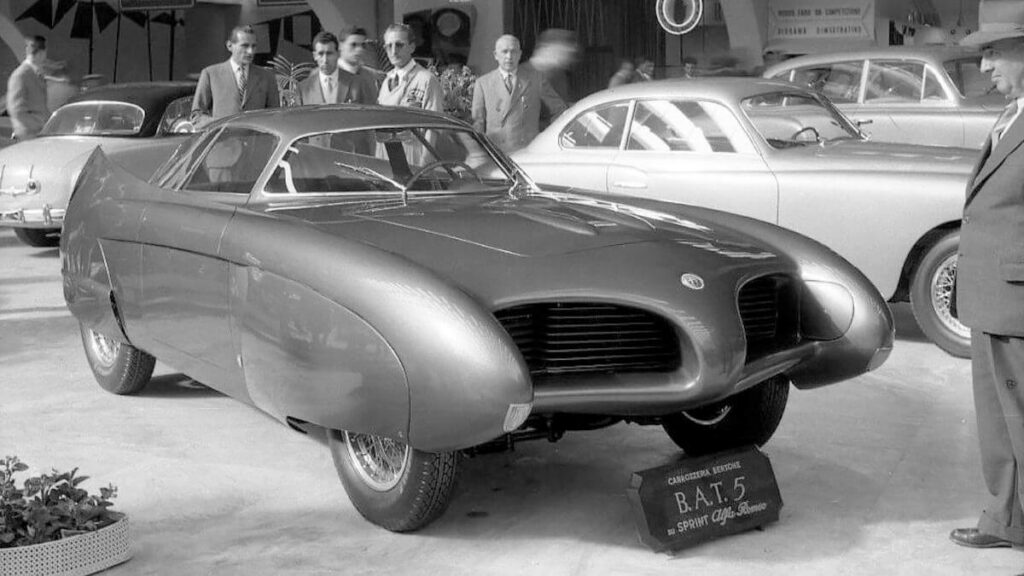
The Alfa Romeo BAT 5, unveiled at the 1953 Turin Motor Show, epitomizes Space Era automotive design by Franco Scaglione at Bertone. Drawing inspiration from aerospace and futurism, its aerodynamic lines were meticulously crafted to minimize turbulence and resistance, achieving an impressive drag coefficient of 0.23. The car features a streamlined front to eliminate drag and side windows angled at 45 degrees, seamlessly integrating with a large windshield and flat roof. Weighing only 1100 kg, it presents a sleek and uninterrupted profile characteristic of the era’s aesthetics. The rear design is particularly striking, with a large window divided by a thin metal strip—an element later seen in the Chevrolet Corvette Stingray—and two inward-tapered fins that enhance both its futuristic look and high-speed stability.
Lincoln Indianapolis (Boano)

The Lincoln Indianapolis, unveiled at the 1955 Turin Motor Show as “An Exclusive Study by Boano Torino,” is a classic example of Space Era design. Crafted by Gian Carlo Boano, the car embodies bold and futuristic aesthetics inspired by jet aircraft. Its flashy orange body with minimal chrome trim features unique elements like side-mounted exhausts near the engine compartment and faux air intakes in the tail section, adding an aggressive flair. Built on the chassis of the Lincoln Capri, it is powered by a 225-horsepower, 341-cubic-inch Y-Block engine paired with a three-speed Turbo-Drive automatic transmission. The car cost $30,000 to build at the time—about $350,000 today—reflecting its bespoke craftsmanship. After its debut, the Indianapolis was sent to the United States and personally used by Henry Ford II. Although Ford was impressed and offered Boano a ten-year contract, he chose to partner with Fiat instead.
Alfa Romeo 1900 Cabriolet Astral (Boneschi)
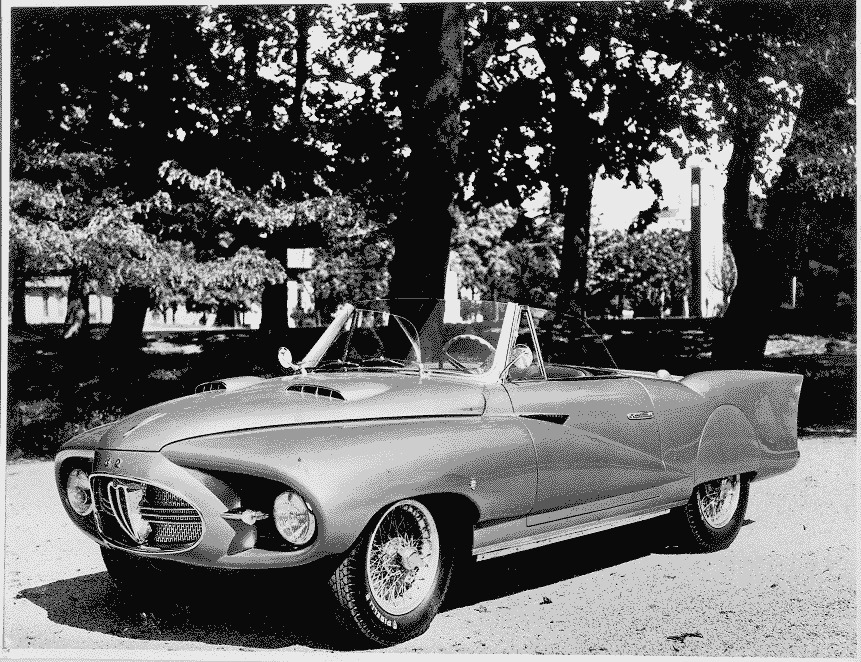
The Alfa Romeo 1900 Astral, crafted by Milanese coachbuilder Boneschi and designed by Rodolfo Bonetto (creator of the Linea Tesa design concept), debuted at the 1953 Turin Motor Show. A classic example of Space Era design with jet-inspired elements. Built on the Alfa Romeo 1900C chassis, only two specimens were produced; one in vibrant green and the other in grey; each with distinct features like unique grilles and exterior details. The green Astral was notably acquired by Rafael Trujillo from the Dominican Republic. The Astral also graced prestigious events such as the Concorso d’Eleganza di Stresa in 1953 and another in Rome in 1954, showcasing its innovative design and meticulous craftsmanship.
Fiat 2100 Rocket (Francis Lombardi)

The Fiat 2100 Rocket Coupé, designed by Carrozzeria Francis Lombardi, debuted at the 1959 Turin Motor Show. True to its name, the car exemplifies Space Era design, embodying a sleek and lower-profile application of jet-inspired elements rather than more extreme features. Built on the Fiat 2100 chassis, this one-off coupé showcases streamlined bodywork with smooth, aerodynamic lines that are visually striking yet sophisticated.
Lancia Aurelia PF200 C Spider (Pininfarina)

Pininfarina, the most important italian coachbuilder at the time, could not miss to embrace the Space Era trend, as did other Italian coachbuilders. The Lancia Aurelia PF200 C Spider from the early 1950s stands as a quintessential example. Its design features a prominent circular nose and large chrome bezel, reminiscent of an F-86 Sabre fighter jet intake. The aerodynamic profile includes a raked windshield, pontoon-style fenders, and a finned tail with six exhaust tips above the rear bumper. Over four years, Pininfarina produced various PF200 variants, each with unique touches like elliptical noses and different exhaust configurations. This design language even extended to a Cadillac-based model, reflecting the broad influence of Space Era aesthetics on automotive design.
Cadillac Starlight (Pininfarina)
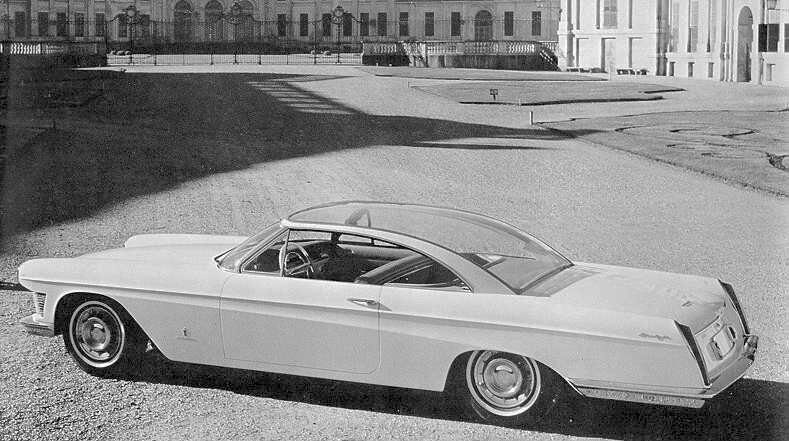
The Cadillac Starlight vividly illustrates the Space Era’s influence on automotive design, with its name itself evoking a sense of futuristic ambition. Created by Pininfarina as another take on the Space Era design trend, this model emerged from a collaboration inspired by the Cadillac Eldorado Brougham project. A notable highlight was its Plexiglas top, which included an ingenious “headliner” of four articulated metal panels that could be neatly stowed behind the parcel shelf when not in use.
Pininfarina X
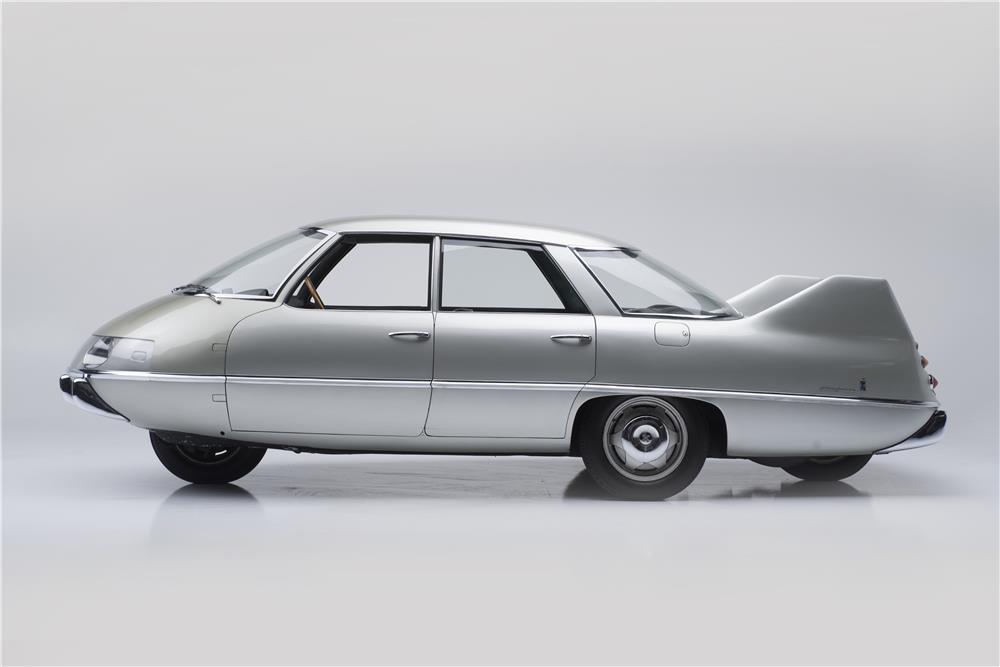
The Pininfarina X, which looked like a small UFO on four wheels, epitomized the Space Era’s influence on automotive design in the late 1950s and early 1960s. This groundbreaking concept car embraced the teardrop shape for aerodynamic efficiency but adapted it with a unique cruciform platform. Instead of the conventional four-wheel layout, it featured a single steering wheel at the front, a single driving wheel at the rear, and two outrigger wheels on the sides, complemented by large rear fins for added stability. Powered by a 1089cc Fiat engine delivering 43 horsepower and achieving an impressive drag coefficient of just 0.23, the Pininfarina X showcased bold innovation. Unusually, it was a fully functioning vehicle, driven by Battista ‘Pinin’ Farina in efforts to bring its design to production.
Alfa Romeo C52 Disco Volante (Touring)

The Alfa Romeo 1900 C52 Disco Volante, probably the most iconic example of Space Era-inspired design, embodies the futuristic vision of the early 1950s. The name “Disco Volante” literally means “Flying Saucer” in Italian, perfectly capturing its striking, otherworldly appearance. Produced between 1952 and 1953, this collaboration between Alfa Romeo and Carrozzeria Touring is renowned for its innovative design. The Disco Volante Spider, featuring wind tunnel-tested bodywork and a 2-liter four-cylinder engine, made its debut in 1952 with only three units built. The design was later adapted into a coupe and fitted with a 3.5-liter six-cylinder engine in additional models, linking it to Alfa Romeo’s racing heritage.
Hudson Italia (Touring)

The Hudson Italia is a prime example of Space Era-inspired design, with its jet-inspired elements reflecting the era’s fascination with aviation. Developed in the 1950s through a collaboration between Hudson Motor Car Company and Carrozzeria Touring, the Italia features a streamlined, aluminum body with distinctive design cues. Notably, the tail lights of the Hudson Italia are designed to recall jet pipes, a nod to the era’s obsession with jet aircraft and futuristic aesthetics. This detail, along with the car’s overall aerodynamic shape, underscores the creative influence of the Space Age on automotive design. Although only 26 units were produced, the Hudson Italia remains a celebrated icon of mid-century innovation, blending American engineering with Italian craftsmanship.
Nardi Raggio Azzurro I (Vignale)
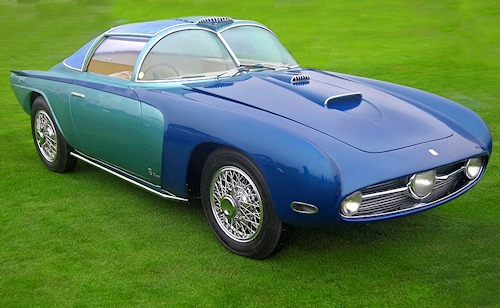
The Nardi Raggio Azzurro I, designed by Giovanni Michelotti and built by Vignale, epitomizes Space Era-inspired automotive design. Completed in 1955, its name, meaning “Blue Ray,” evokes a futuristic vision akin to a laser beam. The car’s design features a full-grille front and three headlights, including a central one, reminiscent of jet aircraft from the 1950s. Its blue Perspex™ roof, with a grilled air scoop and internal vents, resembles a double-bubble jet cabin, while the sliding side and rear windows enhance its space-age aesthetic. The rear tail fins, shaped like a swallow’s wings, further emphasize its aviation influence. Built on a tubular steel chassis and powered by a modified Lancia Aurelia V6, the Raggio Azzurro I blends advanced technology with striking design. Showcased at the 1955 Turin Auto Show and later in Paris and New York, it remains a celebrated example of mid-20th-century automotive innovation.
Fiat 600 Multipla Spiaggetta (Vignale)
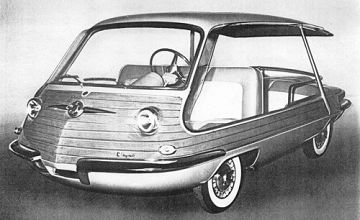
The Fiat 600 Multipla Spiaggetta, a one-off by Vignale and designed by Giovanni Michelotti, is a vivid example of how Space Era design principles influenced even smaller cars. Unveiled at the 1957 Geneva Motor Show, this bold beachcar features a unique blend of futuristic aesthetics and nautical inspiration. The Spiaggetta’s design is defined by its continuous roof, which extends from the windshield and eliminates traditional pillars. Supported by tubular reinforcements, this seamless roof creates a sleek, aerodynamic silhouette reminiscent of both boats and flying saucers. The body, primarily crafted from wood with a steel undercarriage, further emphasizes its innovative design. The car’s open rear and absence of conventional doors and side panels enhance its practicality as a beachcar while reflecting its Space Era-inspired form. This combination of futuristic lines and nautical influences demonstrates how the Space Era’s impact extended beyond high-performance and luxury vehicles to even the most utilitarian of designs.

